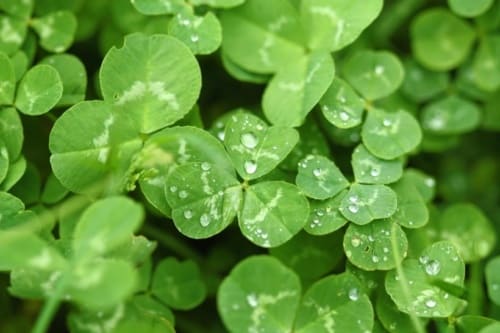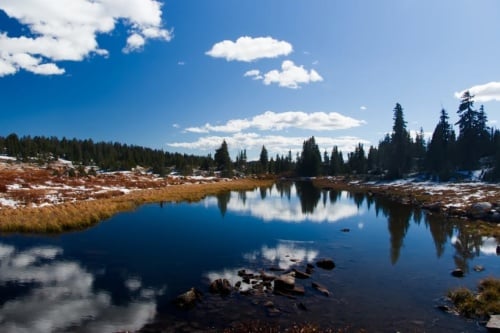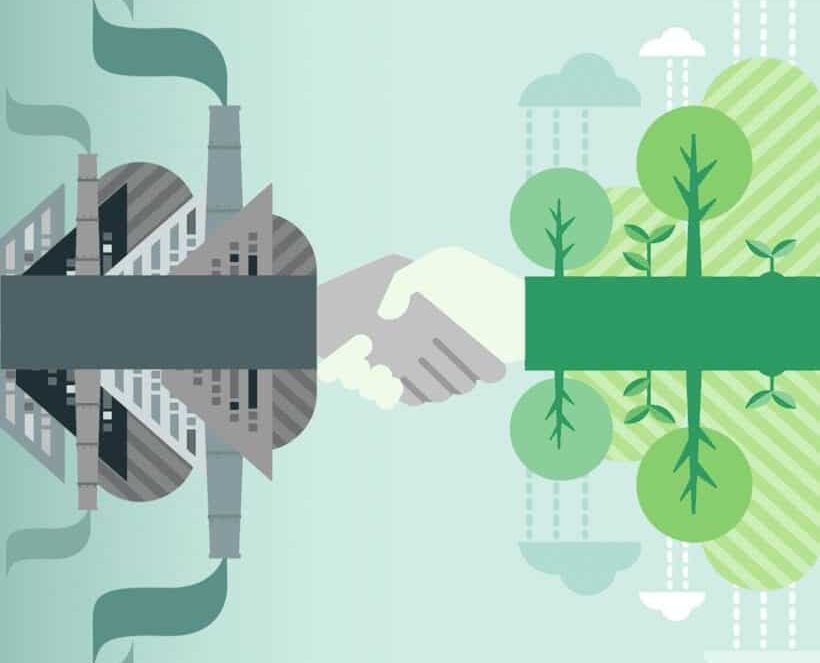A lasting Green impact is only possible if sustainability is fully integrated into the everyday activities of students
Continuing the much deserved focus on Earth Month, I reached out to Nik Kaestner, Director of Sustainability at San Francisco Unified School District. We had the opportunity to discuss the nationally recognized sustainability project he currently runs. In many respects, Kaestner is heading up a testing ground for environmental policies that will eventually make their way across the country. San Francisco has built a reputation for its environmentally friendly approach, but it takes leadership like Kaestner to make it succeed and become nationally influential.
Kaestner recognizes that schools have a unique platform to teach students both impactful and critical environmental decisions that will carry forward throughout a lifetime. Environmental choices made as adults have their cognitive and behavioral beginnings in early childhood. Students participating in sustainable schools have an additional opportunity to inform and influence parents of environmentally conscious activity. A lasting impact is only possible if sustainability is fully integrated into the everyday activities of students.
It all starts with adopting curriculum that that will integrate environmental sustainability. The new science standards make it easier to push forward environmental themes because context is now encouraged over rote memory. In order for mainstream national impact to take place, Kaestner sees a method similar to the California Energy and the Environment Initiatives. If a set of lesson plans with sustainable themes could be inserted into already established curricula then the approach could be maintained at the national level.
It’s becoming clear that education leaders are more positioned now than ever before to have a major impact in shaping our national environmental awareness.
Interview
Dr. Berger: It’s really compelling when we look at sustainability and we integrate that into the education equation. A lot of people think about San Francisco as being much more progressive than the majority of the country. From your perspective, where is San Francisco with regards to sustainability and how it ties in education?
Nik Kaestner: From a sustainability perspective, I think we would be on the progressive end of the spectrum. Our city has a lot of policies that are kind of first in the state. California is leading in many respects, so we think of ourselves as a testing ground for some of the environmental policies that will eventually make their way across the country.
In terms of education, it’s kind of a mixed bag. San Franciscois one of the best performing large school districts in the state, if not the best performing large school district.
But the problem is, we do have a disparity between our low-income and high-income students, and that’s something we’ve been working on for a long time. On the state level, we don’t have as much funding as some other states have on a per-student basis.
DB: Tell us where you think we can go when we look at the environment and integrating that into curriculum and the everyday practices within a school district. What can we learn from what you’re doing and how much further can we push the needle?
NK: I think the important aspect here is that schools have the opportunity to educate students who will eventually be making the same decisions that we’re trying to make today: Where should I get my power from? What kind of vehicle should I drive? Should I update my home or not?

For students to understand the ecological basis behind the sustainability principles is really critical if they’re going to respond to public education campaigns in the future.
Then students will go home and explain some of these concepts to their parents and encourage their parents to recycle, buy green energy, or switch to electric vehicles.
They have a lot of power now but, more importantly, they will be the consumers of the future; and the choices they make at that point are paramount.
DB: One of the things that is globally accepted in education is the slow adoption rate of the educators that have to implement new programs and technologies. That can be what holds us up from moving as quickly as we might like because of the nuances involved in supporting educators.
Are we doing a good job, and where can we improve in supporting teachers in classrooms who are building in environmental and ecological curriculum? How can we improve the everyday practice that students are experiencing so the adoption can speed up and it can be more second nature for both the educator and the district?
NK: That’s a very good question and I don’t think there’s a simple answer. Some of the ways we’re trying to do that include adopting a curriculum that will integrate environmental sustainability into everyday teaching practices and into the content that’s being taught to students. The new national science standards make that easier because the focus in not as much on rote memorization but on using context to teach science.
It’s also important to have outside partners like we have in Education Outside that provide outdoor educators who teach our students in the outdoor classrooms on a regular basis.
The other part is to turn new buildings into living laboratories. As we “green” our buildings, we shouldn’t just do it behind the scenes, but we should put plaques on the walls that explain the new efficient air-conditioning system or that explains the solar energy that’s being produced on the roof.
DB: Can we avoid what has happened to subjects that people may not consider core subjects? We’ve seen what has happened notoriously with arts in U.S. education.
Is there a way that we can integrate in the type of curriculum, the type of approach you’re talking about, so that it is mainstream, so that it’s not just seen at certain events or in certain districts but it’s something that, whether it’s in San Francisco or it’s in Des Moines, Iowa, it’s just a part of the fabric of our education. So we think sustainably about the next generation and what they’re going to do with the planet that they inhabit?
NK: On a national level, I think that would be quite difficult because the hallmark of the new science standards is flexibility and without some kind of a mandate requiring certain curricula to be included in science curriculum, each state is going to make its own decisions. I’m sure that each local entity will also color exactly what is taught in the schools.
A while back California required the energy and the environment initiative which provided a set of lesson plans that could easily be inserted in place of existing lessons. Teachers would teach the same concepts but they would allow an environmental issue to be the context within which that lesson was taught. If we had a similar set of lessons available on a national scale, we could make it easy for teachers who are motivated to include that kind of content, to essentially plug and play instead of having to create stuff on their own.
DB: Do you find that your position at the district is one that is unique or do you see others like you in districts around the U.S.? If so, is there a way to communicate and share best practices?
NK: When I started in 2008, I was probably one of the only sustainability directors in school districts although I’m sure I was not the first. But I just came back two weeks ago from a national conference, the Sustainability Leaders’ Summit that was put on by the U.S. Green Building Council, this time it was in Atlanta. There were about 50 or more practitioners from school districts all over the country. Some were sustainability directors. Some had other job titles but considered sustainability to be part of their scope of work. And they’ve been meeting regularly now for, at least, five or six years to share best practices and to do exactly what you’re talking about. So there is hope.
One of the interesting things I noticed about the conference, though, is that we did not have representatives from Seattle; Portland, or Los Angeles, even though I know there’s great sustainability work going on there. Hopefully, those cities will ramp it up and join the collaborative so that their ideas can be shared with other cities in the country.
DB: Tell me a little bit about your path. Did you start out knowing that this is what you wanted to do professionally? And what can we learn about the moral of your professional path and story so that we can ignite the flame in younger folks who are thinking about what they want to do post-college when they are looking at careers?

NK: I started as a high school science teacher. I had a passion for the environment. My parents used to take me to national parks in our little VW bus.
I ended up teaching science for several years and then I realized that the environment was really what I was interested in and I included some environmental concepts in my own teaching.
But when my wife went to grad school on the East Coast, when I moved up there I decided that was my opportunity to switch into the environmental field.
At that time, I learned everything on my own. Nowadays, there are a lot more programs and fellowships available that allow student from a variety of backgrounds to immerse themselves in environmental sustainability work either at a public agency or in a private company. I think that’s a great way to get started and get their feet wet, so to speak, in the process of doing actual sustainability work on a day-to-day basis.
DB: I think what you’re doing in San Francisco is fantastic and it’s, obviously, a beacon for many people to look out for as they’re trying to build out their sustainability departments in districts across the U.S.
About Nik Kaestner
Nik Kaestner is the first Director of Sustainability at the San Francisco Unified School District (SFUSD), where he has collaborated with teachers, students, and staff to develop a nationally-recognized sustainable schools program. His staff of five keep busy promoting energy efficiency, water conservation, waste reduction, green schoolyards, and low-carbon transportation.
Since Nik’s hire, SFUSD’s energy use has dropped by 30%, water usage is down 28%, and waste diversion has doubled to 66%. SFUSD has been recognized as a Green Ribbon district by the US Dep’t of Education and received the “Best of Green Schools” award for industry transformation from the USGBC’s Center for Green Schools and the Green Culture Leadership Award at the CA Green Schools Summit.
Author
education correspondent for MindRocket Media Groupis an education correspondent and media personality is an education correspondent and correspondent with articles in The Huffington Post, Scholastic, EdTechReview India and Forbes.
- SF Beautiful – Interview – Nik Kaestner
- Center for Ecoliteracy – Ecoliteracy for All in San Francisco
- My Statesman – Group aims to mold next generation of environmentalists

